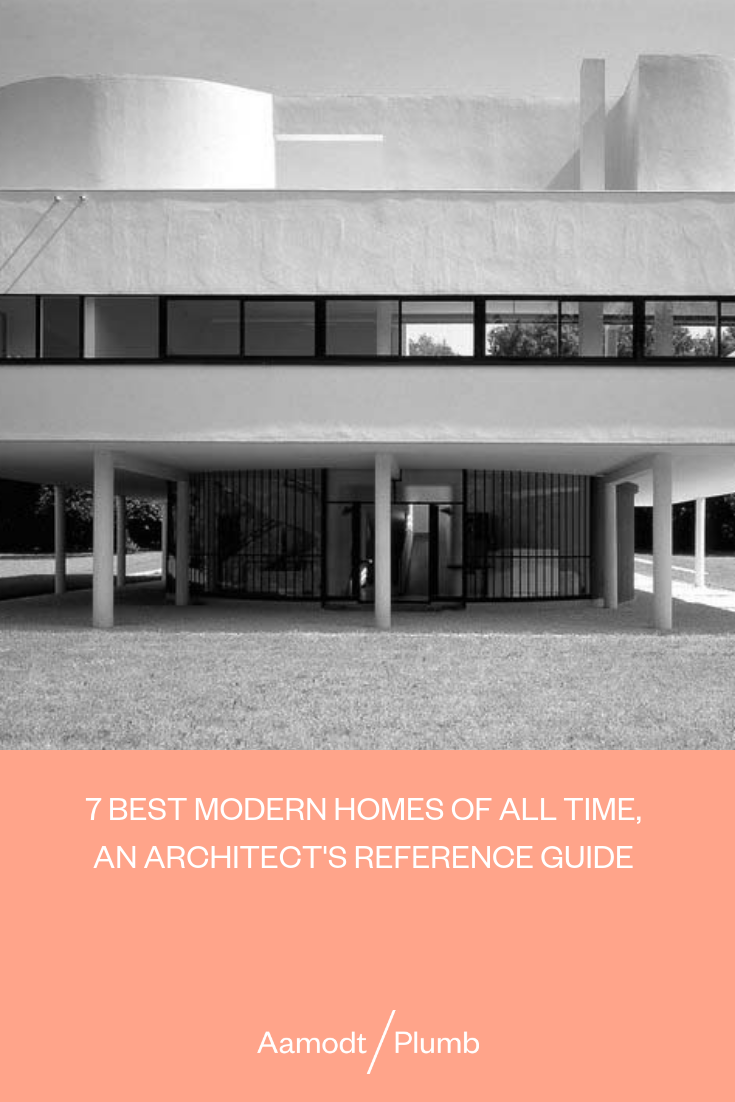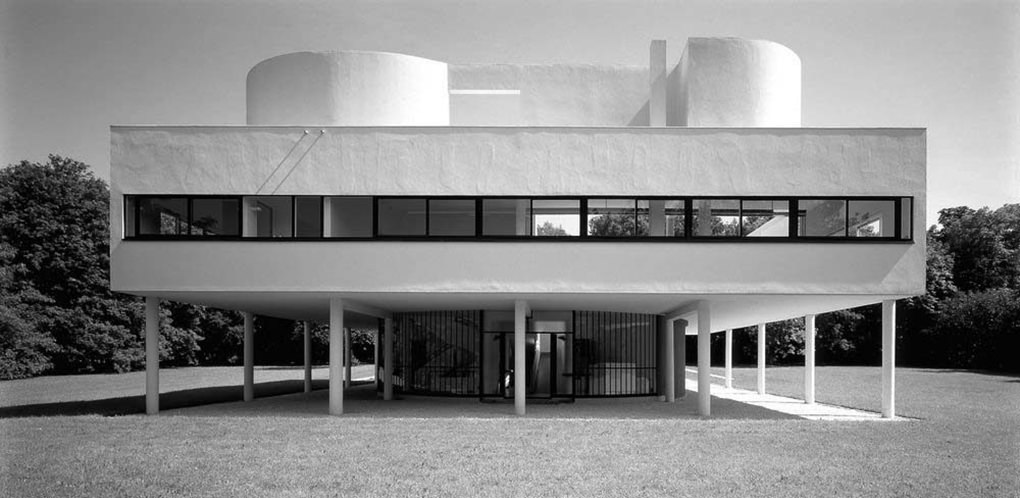
7 Best Modern Homes Of All Time, An Architect’s Reference Guide
We’ve assembled a list of the best modern homes of all time from around the world. The list includes many classic modern houses from the greats like Le Corbusier, Frank Lloyd Wright and Alvar Aalto. I visited Fallingwater by Frank Lloyd Wright during college, and it was worth the trip. We have also included some lesser known homes we have visited, such as the Schindler House in LA and the Eliot Noyes House in New Canaan, CT. Have you been to any of these modern homes? If so, share your thoughts in the comments section and suggest other top modern houses you think should be included.

Villa Savoye by Le Corbusier
Villa Savoye, a modern home on the outskirts of Paris, is considered to be one of the most significant contributions to modern architecture. Completed in 1931, it was designed by Swiss architects Le Corbusier and his cousin, Pierre Jeanneret. The home became a historical monument in 1965.
Villa Savoye is a perfect example of Le Corbusier’s “Five Points” manifesto, which the architect formulated as the fundamental principles of the Modern movement:
- A ground-level pilotis, which elevates the building and allows for a walkway or garden underneath.
- A roof terrace, which brings natural elements to the building. At Villa Savoye, there is a hanging garden on the first floor and a solarium on the second floor.
- An open plan layout, in which the walls have no load-bearing functions. Instead, a network of concrete posts supports the walls. Therefore, at Villa Savoye, Le Corbusier was able to create a living room with three full-length windows and a single window panel measuring an extraordinary 9 x 3 metres.
- An open facade, which allows the walls and windows to be free of load bearing considerations.
- Ribbon windows, which provide illumination and ventilation. This feature gave Villa Savoye the nickname Les Heures Claires, which means “bright times” in French.
Inside, Le Corbusier designed a series of promenades throughout the modern home. This required inhabitants to slow down and experience the movement between spaces.
Form must have a content, and that content must be linked with nature. – Alvar Aalto
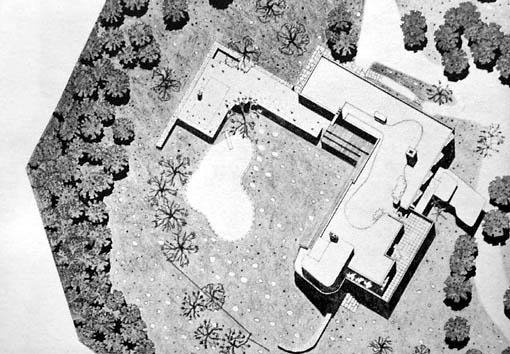
Villa Mairea by Alvar Aalto
Villa Mairea was designed by the Finnish modernist architect Alvar Aalto in Finland in 1939. The clients told Aalto he should regard it as “an experimental house.” Therefore, Aalto used this opportunity to test all his creative ideas. Today, the modern home is famous for marking the transition from traditional to modern architecture. It is one of Aalto’s most important works.
The plan is an L-shape, which creates a semi-private enclosure to one side and a more exclusive edge on the other. The lawn and the swimming pool are within the angle of the L, and a variety of rooms overlook them. Influenced by Frank Lloyd Wright’s Fallingwater, horizontals and overhangs in the main composition echo the ground plane.
Undulating, wave-like forms were a leitmotif of Aalto’s work. These forms are present throughout the house from the shape of the swimming pool to the balcony. According to Aalto, “the curving, living, unpredictable line which runs in dimensions unknown to mathematics, is for me the incarnation of everything that forms a contrast in the modern world between brutal mechanicalness and religious beauty in life.”
Wooden, vertical columns placed throughout the house mimic the surrounding forest of birch trees. Aalto created this to emphasize the continuity between the environment inside and outside the house.
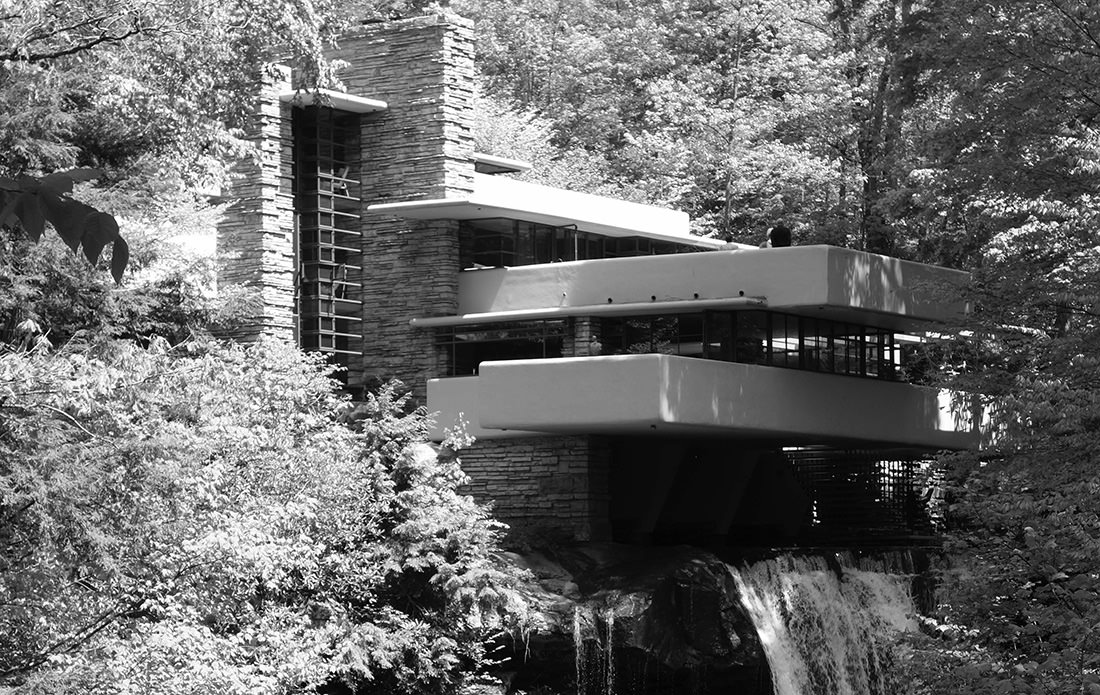
Fallingwater by Frank Lloyd Wright
Fallingwater, also known as the Kaufmann Residence, from 1935 is one of Frank Lloyd Wright‘s best modern homes. In 1966, it was designated a National Historic Landmark, and it is listed in The Smithsonian’s “28 Places to See Before You Die”.
Built partly over a waterfall in the Allegheny Mountains of rural southwestern Pensylvania, the house was a weekend getaway for the Kaufmann family. The sound of the water permeates the house, especially during the spring when the snow is melting. Locally quarried stone walls and cantilevered terraces resemble the nearby rock formations. This creates a harmony between the built and natural environments. The design incorporates broad expanses of windows and balconies, which reach out into the landscape.
Years later, Kaufmann’s son said, “[Wright] understood that people were creatures of nature, hence an architecture which conformed to nature would conform to what was basic in people. For example, although all of Falling Water [sic] is opened by broad bands of windows, people inside are sheltered as in a deep cave, secure in the sense of the hill behind them.”

The Glass House by Philip Johnson
The Glass House, also known as the Johnson House, is an iconic example of modern architecture, located in New Canaan, Connecticut. Built in 1949, Philip Johnson designed it as his own residence, and it is one of the first modern homes in the US to use industrial materials, such as glass and steel. The building is an essay in minimal structure, geometry, proportion and the effects of transparency and reflection. In 1997, it became a National Historic Landmark.
The home overlooks a pond and a stone wall conceals it from the road. The exterior is completely open to the outdoors by glass walls except for a cylinder brick structure at the entrance to the bathroom. The red brick floor is 10 inches above the ground, so that it appears as if it’s floating. Inside, the kitchen, dining and sleeping areas are all in one glass-enclosed room and with low cabinets and bookshelves used as dividers.
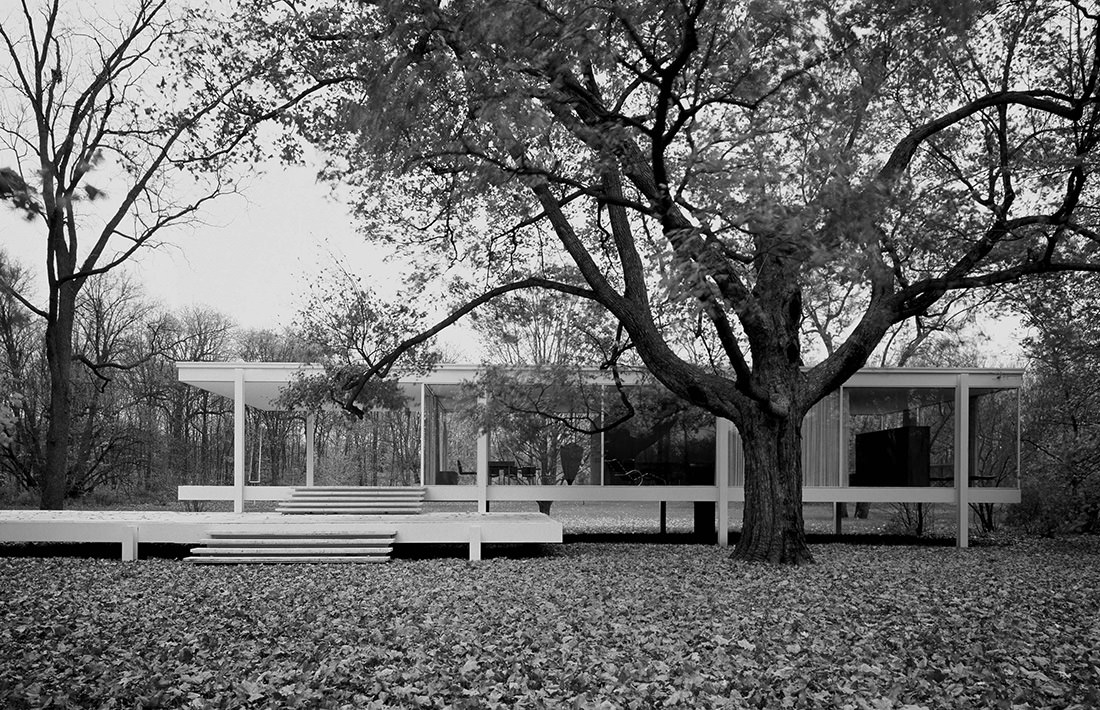
The Farnsworth House by Ludwig Mies van der Rohe
Ludwig Mies van der Rohe completed The Farnsworth House in 1951 as a one-room weekend retreat in Plano, Illinois. Dr. Edith Farnsworth, a Chicago nephrologist, commissioned the modern home as a place where she could play the violin, translate poetry and enjoy nature.
The modern home is a single story structure consisting of eight steel columns that support the roof and floor frameworks. In between each column are floor-to-ceiling windows that open up the shelter to the surrounding landscape. The building is essentially one large room with zones for sleeping, cooking, dressing, eating and sitting. This concept is an architectural aesthetic that defined Mies’ American career.

The Schindler House by Rudolf M. Schindler
Completed in 1922, Rudolf M. Schlinder’s Schindler House is an unconventional two-family house located in West Hollywood. Shared between the Schindlers and the Chaces, it allowed the two couples to save both money and labor. This building would set the tone for many modern homes for decades.
The house is two interlinking L-shaped apartments. A common utility room, with a kitchen, laundry, sewing room and storage, connects the two apartment. Each apartment had two studios, one for each of the four members of the household. Everyone would converge in the communal kitchen for domestic chores. Instead of bedrooms, there are two rooftop sleeping baskets made of redwood four-post canopies, protected from the rain by canvas sides.
The Schindler House was both architecturally and socially unconventional, as the residence was a cooperative live and work space. The concrete walls and sliding glass panels made novel use of industrial materials while the open floor plan integrated the environment into the residence.
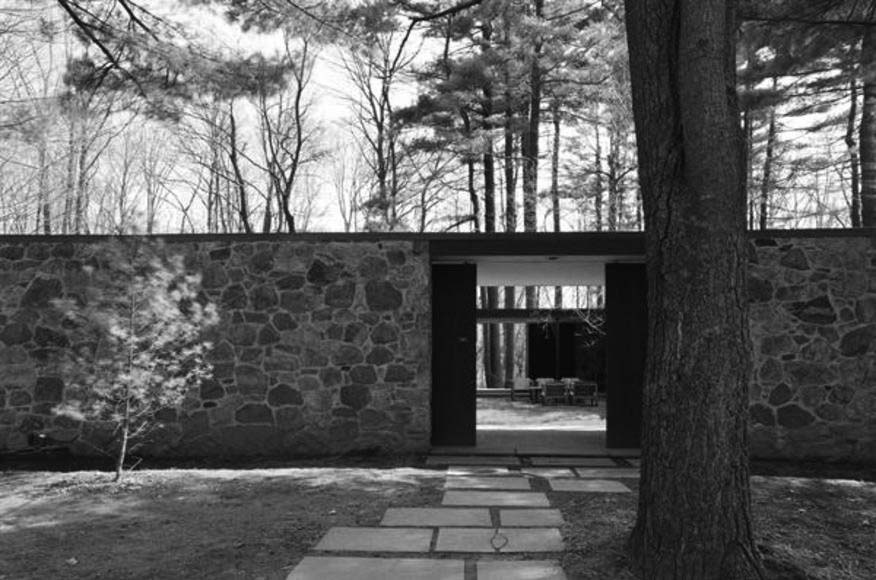
The Eliot Noyes House by Eliot Noyes
The Noyes House (1955) was designed by Eliot Noyes for his own family. The modern home is a single story structure with a courtyard plan. One rectangular volume contains the bedrooms, while the other houses contain the living areas. The north and south walls are of local fieldstone, giving the house privacy from the road. Meanwhile, the east and west walls are of floor-to-ceiling glass, allowing light and air to move through the house.
Natural materials allow the house to blend in with the environment. However, the juxtaposition of the glass walls gives the home a striking quality. Both Life and Time magazines featured the modern home. It won the AIA Award of Merit in 1957.
Interested in designing your own custom modern home? We are here to help!





